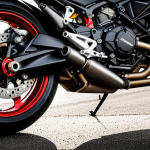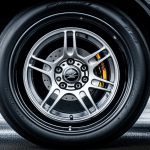Essential Preparation Before Replacing Spark Plugs
Before diving into Yamaha XSR700 spark plug basics, it’s crucial to gather the right tools and supplies tailored specifically for this model. You’ll need a spark plug socket with an extension, a torque wrench calibrated for motorcycle use, and a feeler gauge for gap measurement. Use recommended spark plug types such as NGK CR9EK or those matching Yamaha-approved part numbers to ensure optimal performance and avoid engine issues.
Setting up a dedicated workspace is essential. Work on a level surface, free from distractions, and ensure the engine is cool to prevent burns or damage to components. Safety precautions include wearing gloves to protect your hands from grime and chemicals and goggles in case of debris. Disconnect the battery to eliminate risks of short circuits during the process.
Lire également : Master DIY Tutorial: Expert Tips for Replacing Your Kawasaki Ninja 400 Rear Shock Absorber like a Pro!
The spark plug replacement checklist should confirm you have:
- Correct tools and new spark plugs
- Clean rags to wipe any debris
- Anti-seize compound for plug threads if recommended
- Service manual or torque specs handy
Taking these steps ensures your DIY motorcycle maintenance runs smoothly, sets a safety standard, and preserves the motorcycle’s longevity before you begin replacing the spark plugs on your Yamaha XSR700.
A découvrir également : Complete DIY Manual: Expert Tips for Replacing Rear Brake Pads on Your Ducati Streetfighter V4!
Essential Preparation Before Replacing Spark Plugs
Before undertaking Yamaha XSR700 spark plug basics and jumping into DIY motorcycle maintenance, having the right tools and supplies is crucial. Start with a spark plug socket that fits the XSR700’s plugs, usually 16mm, plus an extension bar and ratchet wrench for comfortable access. Use a torque wrench to ensure accurate tightening, helping avoid engine damage. Always keep a spark plug gap gauge handy to verify the correct gap for your replacement plugs.
For spark plug replacement checklist specifics, Yamaha commonly recommends NGK Iridium plugs—check your owner’s manual for the exact part number compatible with your model year. Using the correct plug type ensures optimal combustion and engine performance.
Safety precautions matter. Work on a cool engine to prevent burns. Set your workspace in a well-lit, clean, and flat area, ideally indoors to avoid dust and debris contaminating the engine components. Disconnect the battery to avoid electrical hazards during maintenance. Proper lighting and organization reduce errors, making your DIY motorcycle maintenance safer and more efficient.
Preparing diligently leads to a smoother spark plug replacement experience, maintaining your Yamaha’s performance and longevity.
Essential Preparation Before Replacing Spark Plugs
When tackling Yamaha XSR700 spark plug basics, the foundation lies in selecting the right tools and supplies tailored precisely for this model. The spark plug replacement checklist must include a 16mm spark plug socket, extension bar, ratchet, and a calibrated torque wrench—key for tightening plugs to Yamaha’s recommended specifications without risking damage. A spark plug gap tool is essential to verify the gap matches the precise measurement outlined for your specific plug type.
Yamaha typically recommends using NGK Iridium plugs, specifically the NGK CR9EK or equivalent, ensuring optimal combustion and smooth engine performance. Confirm the exact part number in your owner’s manual as this varies by year and engine configuration. Using the correct plug type safeguards against misfires and power loss.
Setting up an ideal workspace enhances safety and efficiency. Work on a cool engine in a well-lit, clutter-free area with stable, flat ground. Disconnect the battery to eliminate the risk of shorts during your DIY motorcycle maintenance. Wearing gloves and eye protection prevents injuries from grime and accidental debris. Organizing tools beforehand reduces disruptions, letting you focus on meticulous replacement steps that keep your Yamaha running smoothly and reliably.
Essential Preparation Before Replacing Spark Plugs
Before starting your DIY motorcycle maintenance on the Yamaha XSR700, ensure you have all required tools specific to this model. The spark plug replacement checklist must include a 16mm spark plug socket with an extension, a ratchet wrench, and a torque wrench calibrated for motorcycles. A spark plug gap gauge is vital to measure and confirm the precise gap, which affects ignition efficiency.
Yamaha typically recommends NGK CR9EK Iridium plugs or equivalents specified in the owner’s manual. Confirming exact part numbers ensures compatibility, preventing misfires and maintaining engine smoothness. Using incorrect plugs can lead to power loss or inefficient combustion.
Workspace setup is equally critical. Choose a flat, clean, and well-lit area free from dust. Always work on a cool engine to avoid burns. Disconnect the battery to eliminate risks of electrical shorts during plug removal and installation. Wearing gloves protects against grime and sharp parts, while goggles shield your eyes from debris.
Following these Yamaha XSR700 spark plug basics guarantees a safer, more efficient replacement experience and preserves your bike’s performance through well-prepared DIY maintenance.
Essential Preparation Before Replacing Spark Plugs
Proper Yamaha XSR700 spark plug basics start with gathering the precise tools and supplies tailored to this model. The spark plug replacement checklist must include a 16mm spark plug socket, extension bar, ratchet, and a calibrated torque wrench to avoid over- or under-tightening. A spark plug gap gauge is mandatory to ensure the new plugs have the correct gap, which directly affects combustion efficiency and engine performance.
Recommended spark plugs like the NGK CR9EK series align with Yamaha’s part numbers and guarantee compatibility. Confirming the exact replacement type from your owner’s manual is vital because using incorrect plugs can lead to misfires or reduced power. Yamaha often favors iridium plugs for their longevity and stable performance.
Safety during DIY motorcycle maintenance requires a clean, well-lit workspace with the engine cool and battery disconnected to prevent accidents. Wearing gloves protects your hands from sharp edges and contaminants, while eye protection guards against debris during plug removal. Organizing tools beforehand on flat, stable ground reduces the risk of mistakes and speeds up the replacement process, ensuring your Yamaha XSR700 runs reliably and safely.






